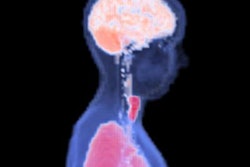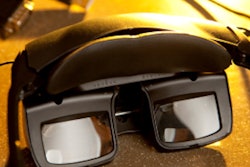
Running an MRI service is like being the captain of a ship on the ocean, according to a keynote presentation at the International Society for Magnetic Resonance in Medicine (ISMRM) virtual conference. Smooth navigation depends on effective collaboration with physicists, technologists, and other staff.
 Dr. Pia Sundgren, PhD.
Dr. Pia Sundgren, PhD.Among the required traits for a dedicated MRI radiologist is strict adherence to MR imaging and safety protocols, while balancing department and economics resources for the benefit of both the facility and the patient, said Dr. Pia Sundgren, PhD, professor in the department of clinical sciences and radiology and co-director of the bioimaging center at Lund University in Sweden.
"The radiologist or the [medical doctor] is the captain on the ship when it comes to all the ethical considerations that we have to think about," she said. "We are medically responsible for the patient and we also are responsible to secure the protocols for scanning the patients and patient MR safety."
Among the critical questions is whether a request for an MRI scan is appropriate. To answer this query, radiologists need accurate clinical information to ensure MRI is the best imaging strategy for a particular indication. For one, collaboration between the radiologist, technologist, and referring physician can rule out any contraindications.
"It is important to have clear guidelines for the procedure, from receiving a request, to the protocol in an MRI examination, to performing the study and reading the report," Sundgren told ISMRM's virtual viewers. "We also must have established an MRI safety routine and have a specific MRI radiologist who can take the calls from the MR radiographer, review the MR safety concerns, and handle the MR department resources."
An evaluation of those resources includes comparing the number of available MRI scanners with the number of requested patient scans. A decision can be formulated by the radiologist and physician based on prioritizing the patient's condition to determine which scans are urgent and which scans can wait, she added. Another critical component is reviewing potential MR safety issues with an MR physicist, technologist, or physician to make sure there are no devices in the patient that are not suitable for MR imaging.
"As a radiologist, it is our responsibility to have dedicated MR protocols that are related to the organ of interest, the clinical question, known routines on specific protocols within the department, and protocols that are related to the suspected disease or the suspected diagnosis," Sundgren said. "These protocols must be prescribed and followed to avoid any misunderstanding between the radiologist and the MR radiographer who is performing the examination."
While MRI safety is always a priority, Sundgren said it can be difficult to get radiologists to return for follow-up training sessions or to renew their safety certification once they have completed their initial education, since they spend so little time, if any, in the MRI suite.
"Still, [radiologists] are the ones who have the medical and overall responsibility in an emergency situation, as well as the medical and legal responsibility for what happens to a patient in the MR scanner," she added. "A solution for this could be to require recertification and that there should be e-learning modules available to radiologists, as well as hands-on and personal training with certification on an annual basis, just as they would be for the radiographers and physicists."
Sundgren postulated that radiologists, physicists, and technologists could obtain a "driving license" certification to ensure they can safely operate and oversee the scanner. The certificate would be renewed annually to ensure everyone is up-to-date on latest safety protocols.


















